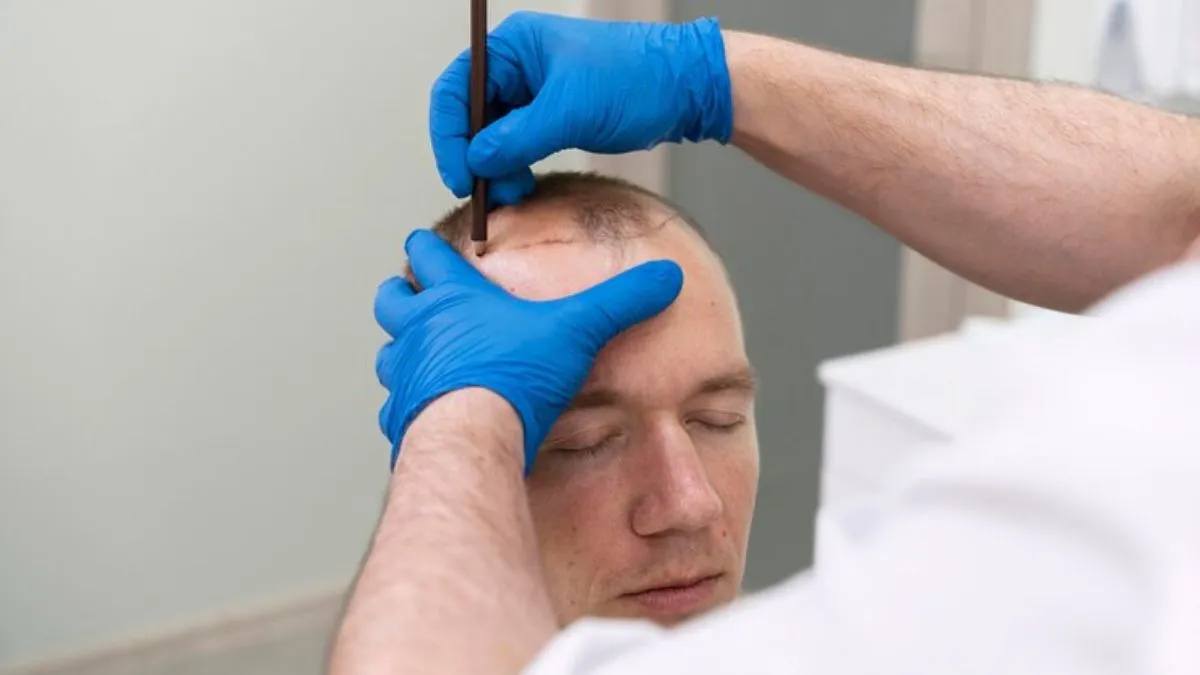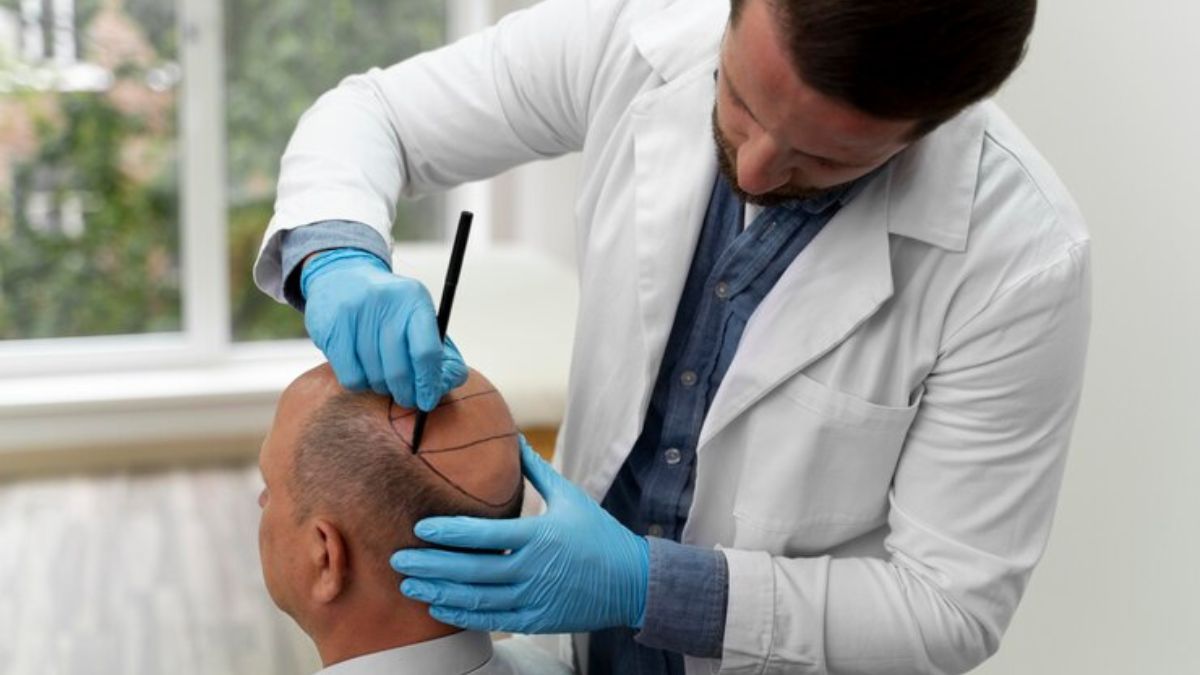
Have you considered a hair transplant treatment and worried about the potential risks and safety concerns associated with this treatment? If so, you are not alone; most people who choose a hair transplant treatment invest time gathering knowledge about the procedure, investigating clinics, and selecting a surgeon for maximum density and natural results. Regardless, of all the possible safety measures, utmost care must be taken during each phase of the process, minimizing the risk and maximizing performance. Additionally, some specific safety procedures are followed from the first consultation to the post-operative treatment, which plays an important role in maintaining the success of the hair transplant. To understand more about safety during hair transplantation, we reached out to Dr Ritika Khanna, Senior Master Surgeon – DHI India who explained everything for our understanding.
Table of Content:-
1. Pre-operative consultation and Unique Diagnosis Alopecia Test
The first step in a safe hair transplantation procedure is the appropriate pre-surgical consultation with the doctor. During the first visit, the consulting doctor analyzes the alopecia test, and physiological aspects and then talks about the type of hair loss or any health issue that is associated with the patient clinical evaluation (patient vitals, cardiac history, contraindications, ongoing medication, and donor-recipient site inspection). This helps identify whether the patient is fit for a hair transplant procedure or if some predisposed conditions could affect the surgery. Such conditions include autoimmune diseases that may trigger hair loss, blood clotting disorders, and infections that should be handled beforehand. Patients should also be informed of potential risks and a probable recovery course. This will help them to have realistic expectations and be well-informed about the care they need post-operatively.
2. Maintaining Hygiene and Hair Care
A key safety protocol before a hair transplant surgery is to maintain adequate cleaning and sanitizing of the scalp, as this will help to prevent infection. Washing hair with a paraben and sulfate-free shampoo well in advance of the operation a day before or the morning of the surgery will help remove dirt or oil. In addition, the patient should avoid hair products like gels, sprays, or mousses for 24 hours before the procedure as they contaminate the skin. Although the surgeon will clean and disinfect the scalp during the procedure, it is advised to arrive with a clean and dry scalp to ensure the best outcome.
Also Read: Thinking To Undergo A Hair Transplant? Here Are 7 Myths Around It

3. Psychological Preparation
The patient should be psychologically prepared for the procedure. Hair transplants are usually pretty straightforward if done by the most advanced hair transplant technique. I.e. DHI technique, it is always helpful to set realistic expectations for the results and the period of recovery. This will give a better understanding of the procedure and knowing what exactly to expect will mainly alleviate anxiety and make things more comfortable for patients.
4. Avoiding Smoking and Alcohol
Smoking and alcohol consumption can significantly hinder recovery after a hair transplant. Smoking restricts blood flow, impairs the healing process, and can lead to poor graft survival. Alcohol, on the other hand, thins the blood, increasing the risk of bleeding during the procedure. To ensure the best possible outcome, it is essential to stop smoking at least two weeks before the procedure and avoid alcohol for 48 to 72 hours before surgery. By suspending these habits, the patient can improve the effectiveness of hair transplant results, reduce the risk of complications such as infection, and promote a faster recovery.
Also Read: Hair Transplant: Things To Consider And What Precautions To Take Post Surgery
5. Post-Operative Care and Instructions
Once the hair transplant is completed, the patient must recognize the importance of post-operative care in ensuring safety and attaining the desired results. Patients are required to adhere to the aftercare instructions given by their surgeons. This usually involves:
- Medication: Prescribed pain medication and antibiotics or anti-inflammatory drugs should be used to control pain and avoid the dangers of infection.
- Scalp Care: The patient should avoid touching or scratching the graft area. Pressure should not be exerted on it. The scalp should also be adequately washed and handled with care not to remove hair follicles from their base.
- Avoiding Physical Activity: Patients are usually advised against doing strenuous exercises after the operation, as this might cause excess sweating and irritation of the scalp.
- Follow-Up Appointments: The patient should schedule and keep regular appointments with the surgeon to assess the progress of healing and any other issues, including the possibility of post-operative complications such as infections and poor graft survival.
Compliance with safety standards while performing hair transplant surgery is critical for the operation's success and the patient’s safety. Prior evaluation of the patient, taking care of hygiene, and appropriate post-operative care all help reduce hazards and improve outcomes. In this manner, patients rest assured that their hair transplant procedure is done expertly, thus enabling quicker healing and more durable results.
Also watch this video
How we keep this article up to date:
We work with experts and keep a close eye on the latest in health and wellness. Whenever there is a new research or helpful information, we update our articles with accurate and useful advice.
Current Version